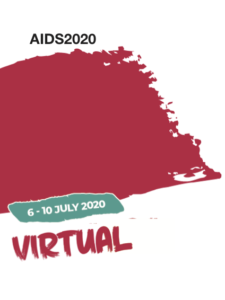Neural tube defects in two of 1000 conception exposures with dolutegravir: reassuring update from Tsepamo study
22 July 2020. Related: Conference reports, Pregnancy, World AIDS 23 Virtual 2020.
After a decline since the original safety signal, the prevalence of neural tube defects (NTD) among infants born to women receiving dolutegravir (DTG) at conception seems to be stabilising at approximately 0.2%. This update from the Tsepamo study was presented at AIDS 2020. [1]
If there is anyone interested in ART for low- and middle-income countries (or indeed for women with HIV of reproductive potential everywhere) who missed this, the Tsepamo study has performed birth outcomes surveillance at government maternity facilities in Botswana, since August 2014.
It was originally set up to look at NTDs and other birth outcomes with efavirenz (EFV) exposure. Botswana began the rollout of DTG in 2016 allowing for its inclusion in the comparative analyses.
In April 2018 the study investigators were asked to provide any preliminary data to WHO for its upcoming ART guideline meeting. This interim analysis showed NTDs among 0.94% infants with periconception DTG exposure. This was much higher than the (as expected) prevalence in the other exposure groups of 0.12% with any ART exposure and 0.05% with EFV exposure.
Our previous reports describe the Tsepamo methodology, these findings in detail and the associated impact on guidelines and programmes. [2]
Tsepamo last reported NTD data up until the end of March 2019. [3] This report showed 0.3% prevalence following DTG at conception exposure compared with 0.1% following exposure to non-DTG antiretrovirals at conception. Although this prevalence was reassuringly lower it was statistically significantly higher than other exposure groups – but the absolute difference of 0.2% was very small.
The study is ongoing and the most recent update included a further 13 months of data collected to the end of April 2020.
Between 1 April 2019 and 30 April 2020, the study (which currently covers about 70% of all births in Botswana) documented 39,200 additional births, including 1908 DTG conception exposures. See table 1.
Table 1: Tsepamo study – new NTDs and exposures 1 April 2019 to 30 April 2020
| NTDs | Exposures | |
| Total | 28 | 39,200 |
| DTG at conception | 2 | 1908 |
| Non DTG at conception | 6 | 4569 |
| EFV at conception | 5 | 2999 |
| DTG started in pregnancy | 1 | 741 |
| HIV negative | 17 | 30,258 |
There were two new NTD cases with DTG conception exposure: one lumbosacral myelomeningocele (spina bifida) and one encephalocele.
This gave a total of 7 NTDs with 3591 DTG at conception exposures documented in this reporting period. Prevalence of NTDs with DTG at conception exposure, 1 April 2019 to 30 April 2020 has decreased to: 0.19% (95% CI 0.09 to 0.4).
Prevalence of NTDs in the comparator exposure group of non-DTG ART at conception was: 0.11% (95% CI 0.07 to 0.17). Prevalence for other exposure groups was: 0.07% EFV at conception; 0.04% DTG started in pregnancy; and 0.07% HIV negative. These groups have not changed substantially since the last Tsepamo report.
Prevalence difference between DTG at conception and non-DTG antiretrovirals at conception: 0.09% (95% CI -0.03% to 0.30%). This has also decreased since the last report as has the difference across all other exposure groups.
These prevalence estimates now suggest about one excess NTD per 1000 births with exposure to DTG at conception, with the lower bound of the 95% confidence interval just below or just about zero.
comment
Good news that we can finally “lay this to rest” (as remarked at the AIDS 2020 press conference).
The very small, non-significant difference in risk of NTDs with DTG at conception exposure compared with other ART is outweighed by its advantages. Although we still need to consider the issue of DTG-associated weight gain – for which data continues to emerge, including that presented at AIDS 2020.
It shouldn’t have to be said again, but, women are not a niche (“special”, “sub”, “key”, whatever) population and pregnant women need safety data.
And quick glance at the new antiretroviral presentations shows the same-old-same-old inadequate proportion of women in most clinical trials investigating new agents.
Presenting author Rebecca Zash stressed that safety data for women and pregnant women will also be critical for treating and preventing COVID-19 so the same call for inclusion in trials applies.
References
- Zash R et al. Update on neural tube defects with antiretroviral exposure in the Tsepamo Study, Botswana. AIDS 2020 virtual. 6–10 July 2020. Oral late breaker abstract OAXLB0102.
https://cattendee.abstractsonline.com/meeting/9289/presentation/3500 - Clayden P. Dolutegravir preconception signal: time is up for shoddy surveillance. HTB. 11 July 2018.
https://i-base.info/htb/34459 - Clayden P. Dolutegravir neural tube defect risk declines but still slightly higher than with other antiretrovirals. HTB. 24 July 2020.
https://i-base.info/htb/36478
This article was first posted on 9 July 2020.


